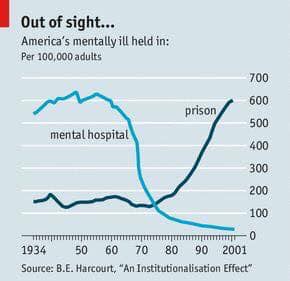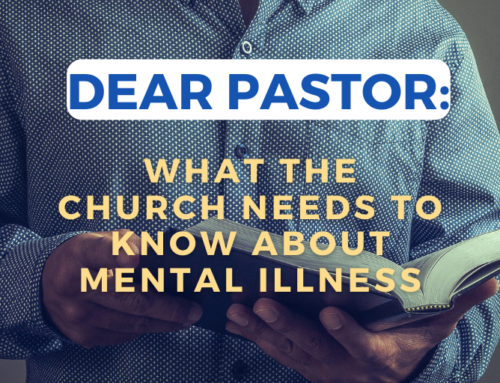I have been aware of the prevalence of persons with mental illness who are incarcerated. I also know first-hand how quality in-patient psychiatric care has all but disappeared. Still, this chart portrays the crisis of mental health care in our nation. And, from the numbers I’ve seen, it’s only getting worse.
What follows is a dialogue that took place in perhaps the best Facebook groups I belong to: Advocates for People with Mental Illness. I wish these folks were in policy-making posts rather than the ones we currently have.
J: Neither peak seems to be healthy, at least not long term. I wonder where the curve would be in a good system.
D: The community health care system that was promised after institutions closed is a dignified response to caring for people who live with mental illness. Much cheaper than institutions and so much more effective and respectful. Where did the funding go when the Institutions closed? We’re still trying to figure this out in Canada.
L: Cali has a surplus of funding from Prop 63.
S: Big Pharma convinced governments that drugs would solve mental illness.
A: Some institutions here in Iowa do a good job but they closed 2 and curtailed use of the others. Yup, where did the funding go and now we have a lack of residential facility beds so some do wind up in jailor prison. disgraceful.
B: Conditions in those state run hospitals were objectively terrible.
C: They were indeed, but frankly prisons of today are more dangerous to the mentally ill. The real problem is the lack of funding for “community based” service. I worked in Lincoln Ne as a clinical social worker for 40 years in a “community based mental health center” originally funded by the Community Mental Health Act in the Kennedy/Johnson era. The county commissioners in 2012 decided to close it and build a state of the art jail. I retired & left the state, rather than take the advice of one of our commissioners to apply for work in the jail. I hear from old colleagues now that many clients I once provided service to are in jail, or have died secondary to lack of community care. The mentally ill and their families of this country are in crisis but no one seems to care.
B: Agree, community based services desperately need more funding.
K: Reagan closed federal mental hospitals and discharged patients. Many had no family and were not equipped for self-care, adding to the huge increase in the homeless population during the Reagan administration. There has to be something better than no treatment at all.
B: It started under Kennedy. The graphic pretty clearly shows that they were mostly emptied by the 80s. And no, actually, I don’t have to agree that the way they brutally mistreated people is better than leaving them alone. Aside from Lithium, psychiatry before Thorazine was basically just torture.
K: I was trying to remember what happened in the early 1960s, so thank you for reminding me. Modern psychiatry has gotten better, and we could do more to help people if the funds were available.
B: Yeah I’m not even against force, but if you go back far enough it was all force and no treatment. Kennedy wanted to get a community treatment system in place. Johnson didn’t follow through.
K: So a lot of people could have avoided prison. I’m both sad and angry that Johnson could have helped them.
Serious mental illness has become so prevalent in the US corrections system that jails and prisons are now commonly called “the new asylums.” In point of fact, the Los Angeles County Jail, Chicago’s Cook County Jail, or New York’s Riker’s Island Jail each hold more mentally ill inmates than any remaining psychiatric hospital in the United States. Overall, approximately 20% of inmates in jails and 15% of inmates in state prisons are now estimated to have a serious mental illness. Based on the total inmate population, this means approximately 383,000 individuals with severe psychiatric disease were behind bars in the United States in 2014 or nearly 10 times the number of patients remaining in the nation’s state hospitals. (“Serious Mental Illness Prevalence in Jails and Prison”, Treatment Advocacy Center.)
Taxpayers and legislators alike seem generally ignorant of the extent to which they are being soaked by the hidden costs of this parsimony. For instance, public care costs far less than public jails. The National Alliance on Mental Illness has estimated that for every $ 2,000 to $ 3,000 per year spent on treating the mentally ill, $ 50,000 is saved on incarceration costs. ― No One Cares About Crazy People: The Chaos and Heartbreak of Mental Health in America







